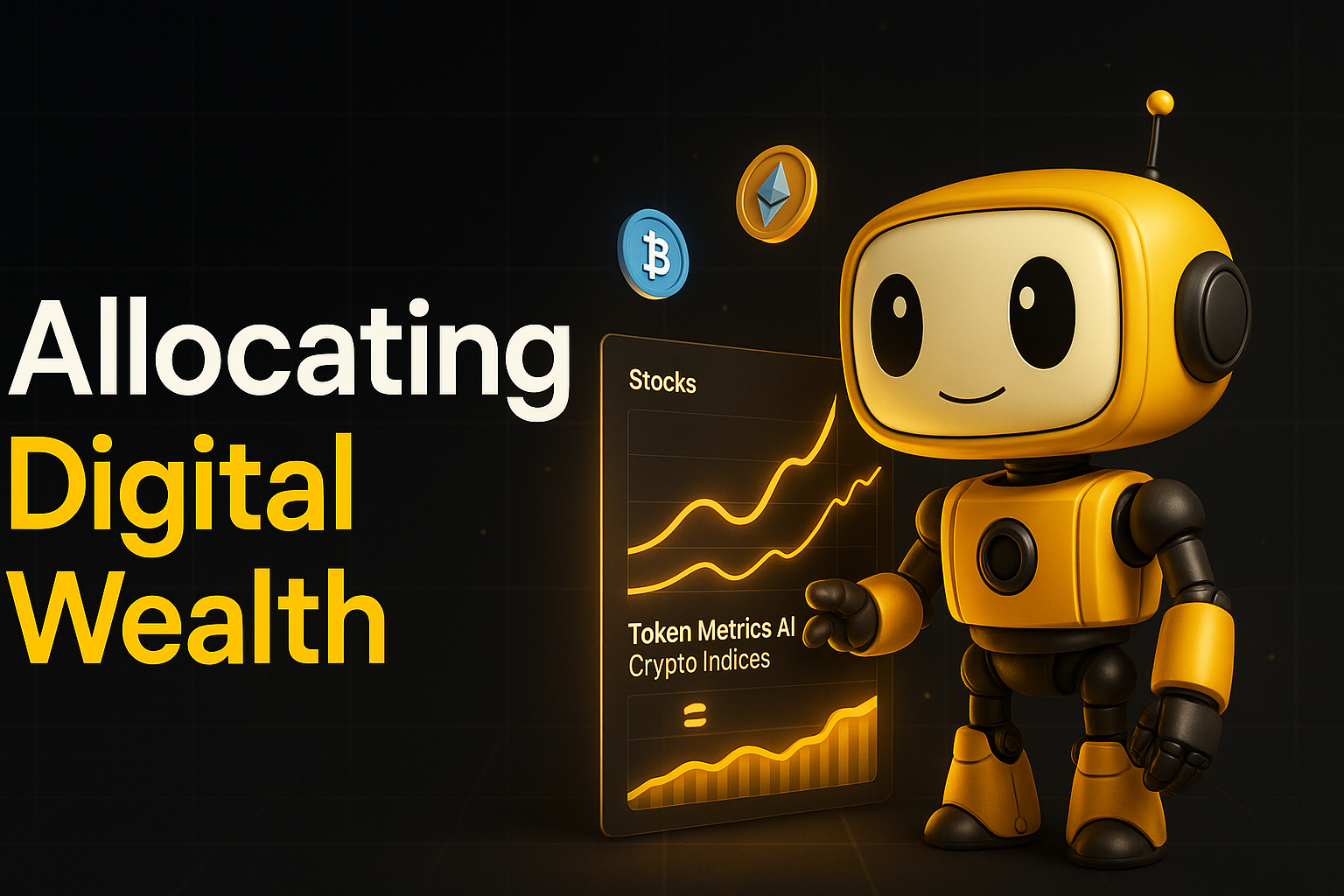
What is Tokenomics? - Complete Guide for Investors

Tokenomics is a buzzword in the crypto industry that has many investors, both seasoned and newcomers, scratching their heads.
In this comprehensive guide, we'll unravel the complexities of tokenomics and simplify it into an actionable framework. By the time you're done reading, you'll not only understand what tokenomics is but also how to evaluate it for your investment decisions.
What is Tokenomics?
Tokenomics combines the words "token" and "economics." It refers to the financial structure of a cryptocurrency. Like the rules of a game, tokenomics defines how tokens work within a particular blockchain ecosystem. If you're an investor, understanding tokenomics is key to making informed decisions.
Simple Definition - Tokenomics involves understanding the purpose, functionality, and the strategic design of a token within a blockchain ecosystem.
It's like understanding the DNA of a cryptocurrency. By knowing the details of how a token works, you can decide if it's a wise investment.
Importance of Tokenomics - Tokenomics impacts everything from the total supply of tokens to how they're distributed, secured, and used. Poor tokenomics can lead to loss of investment, while thoughtful design might provide a roadmap to success.
Key Components of Tokenomics
1. Total Supply - The total supply refers to the maximum number of tokens that will ever exist for a particular cryptocurrency. This aspect is crucial because it introduces the concept of scarcity.
Just like precious metals, if a token has a limited supply, it might increase its demand, and subsequently, its value. Some cryptocurrencies, like Bitcoin, have a capped supply (21 million), while others might have an unlimited supply. Knowing the total supply can give insights into how rare or abundant a token might be in the market.
2. Distribution - Distribution outlines how tokens are allocated among different stakeholders, such as developers, investors, the community, and even reserve funds.
This distribution model needs to be transparent and fair to maintain trust within the ecosystem. An uneven distribution might lead to a concentration of power or wealth, potentially making the token more susceptible to manipulation.
For instance, initial coin offerings (ICOs) often detail how the tokens will be distributed, and this information can be vital in assessing the token's long-term viability.
3. Utility - Utility describes the functionality and purpose of a token within its ecosystem. Is the token simply a store of value, or does it have a specific use within a decentralized application? Understanding a token's utility can provide insights into its intrinsic value.
For example, some tokens might grant voting rights in the project's development decisions, while others might be used to pay for services within the network. A token with clear and compelling utility is often seen as a positive indicator for investors.
4. Security - The security component of tokenomics involves understanding the measures in place to protect the token and the overall network. This can include the consensus mechanism used (Proof of Work or Proof of Stake), how the network guards against attacks, and the security of wallets and exchanges where the tokens are held.
Security is paramount, as vulnerabilities can lead to loss of funds or trust in the network. Assessing the security measures in place and ensuring they meet high standards can save an investor from potential pitfalls.
These key components of tokenomics are integral to understanding how a token operates within its blockchain ecosystem. Analyzing these factors allows an investor to make well-informed decisions, aligning investments with risk tolerance, and potential rewards.
How to Analyze Tokenomics?
Understanding these intricate details is vital for any investor who aims to make informed decisions. Here's how you can analyze tokenomics:
Research Whitepapers - Most crypto projects outline their tokenomics in a document known as a whitepaper. This is often the primary source for understanding a token's supply, distribution, utility, and security.
By thoroughly reading and comprehending a project's whitepaper, investors can discern the intentions behind the token and its potential value. This isn't just a cursory glance; it requires a careful examination to understand the philosophy, technology, and mechanics behind the token.
Check Community Engagement - Community engagement is a vital sign of a project's health. A vibrant and engaged community often signifies strong support and belief in the project's mission.
Investors can explore forums, social media channels, and even physical meet-ups to gauge the pulse of the community. By interacting with community members or simply observing the discussions, one can get insights into how the project is perceived, potential concerns, and the overall sentiment.
Evaluate Utility and Demand - Understanding a token's utility means discerning its purpose and functionality within the ecosystem. Is it merely a speculative asset, or does it serve a unique function? Evaluating the real-world application and demand for the token can provide clues to its intrinsic value.
For instance, if a token is required to access a service within a popular decentralized application, it likely has tangible utility. Coupling this with an assessment of the demand for that service can provide a solid foundation for investment decisions.
Consider the Economic Models - Different projects may employ various economic models, which could include elements like inflation, deflation, or even a hybrid approach.
Understanding these models helps in predicting how the token's value might behave over time. For instance, a token with a deflationary model may increase in value as the supply decreases, while inflationary models might have the opposite effect.
Examine the Regulatory Compliance - Compliance with local and international regulations is a factor that should not be overlooked. Ensuring that the project adheres to legal requirements can minimize potential legal risks and contribute to its legitimacy.
Examples of Tokenomics
Bitcoin (BTC)
Total Supply: 21 million
Distribution: Mining
Utility: Currency
Security: Proof of Work (PoW)
Ethereum (ETH)
Total Supply: No hard cap
Distribution: Mining, also pre-mined
Utility: Smart Contracts
Security: Transitioning from PoW to Proof of Stake (PoS)
Mistakes to Avoid
Investing without understanding tokenomics can lead to losses. Avoid these common mistakes:
Ignoring the Whitepaper: Always read and understand the project's whitepaper.
Following the Crowd: Don't just follow trends; make decisions based on sound analysis.
Overlooking Security: Ensure the project has robust security measures.
Actionable Steps for Investors
Study the Whitepaper: Get details of the tokenomics from the project's official documents.
Engage with the Community: Participate in forums and social media to understand the community's view.
Evaluate Real-World Utility: Ensure the token has a clear purpose and demand.
Consult with a Financial Expert if Needed: Crypto investments are risky, and professional advice can be invaluable.
Frequently Asked Questions
Q1. Can tokenomics change after a project’s launch? How does this impact investors?
Yes, tokenomics can change through updates to the project's protocol or governance decisions. Such changes may impact token value, utility, or distribution. Investors should stay informed by following the project's official channels to understand any changes and assess their potential impact.
Q2. How can I verify the authenticity of the information on a project's tokenomics?
Always refer to official sources like the project's whitepaper, website, and credible crypto analysis platforms. Beware of misinformation from unofficial channels. Participating in community forums and reaching out to the team directly can also help verify information.
Q3. How do forks in a blockchain project affect tokenomics?
Forks can create new tokens with different tokenomics. This might affect supply, demand, utility, and overall value. Understanding the reasons for the fork and the new tokenomics can guide investment decisions post-fork.
Q4. How do token burning and minting fit into tokenomics?
Token burning (destroying tokens) and minting (creating new tokens) can be part of a project's economic model. Burning can increase scarcity, potentially raising value, while minting may increase supply, possibly lowering value. Both mechanisms are used to maintain control over a token's supply and demand dynamics.
Q5. What's the difference between a token's circulating supply and total supply in tokenomics?
Total supply refers to all tokens created, while circulating supply refers to tokens currently available in the market. Understanding the difference helps investors gauge scarcity and potential market saturation, influencing investment strategies.
Q6. How does staking fit into the tokenomics of a project?
Staking involves locking up tokens to support network operations like validation. It can be a vital part of the economic model, affecting supply and demand, providing incentives to holders, and enhancing network security.
Q7. How do governance tokens and tokenomics interact?
Governance tokens allow holders to participate in decision-making within a project. Their inclusion in tokenomics reflects a commitment to decentralization and community involvement, and they can be essential in shaping the project's direction, including changes to tokenomics itself.
Q8. Can tokenomics help in identifying scams or fraudulent projects?
Analyzing tokenomics can uncover red flags like unfair distribution, lack of clear utility, or non-transparent practices. Investors should use tokenomics as part of a broader due diligence process to assess legitimacy and avoid potential scams.
Conclusion
Tokenomics is a complex but essential part of evaluating crypto investments. By understanding the total supply, distribution, utility, and security, you'll be empowered to make informed decisions.
Investing without understanding tokenomics can lead to losses. Remember, do your research, stay updated with current market trends and invest wisely by applying these principles.
Disclaimer
The information provided on this website does not constitute investment advice, financial advice, trading advice, or any other sort of advice and you should not treat any of the website's content as such.
Token Metrics does not recommend that any cryptocurrency should be bought, sold, or held by you. Do conduct your own due diligence and consult your financial advisor before making any investment decisions.

.svg)

Create Your Free Token Metrics Account

.png)




%201.svg)
%201.svg)


%201.svg)









.svg)




.png)